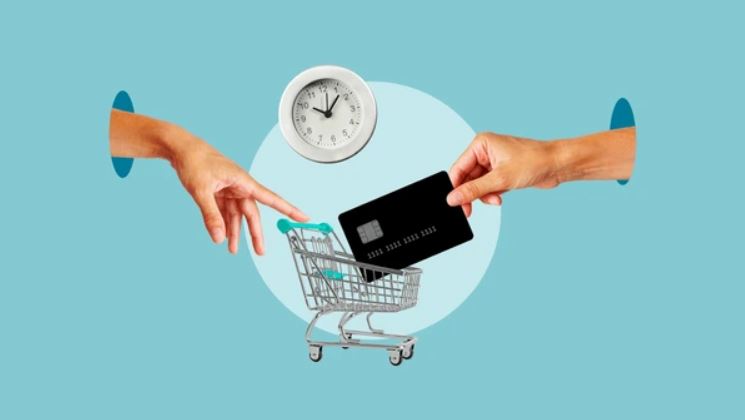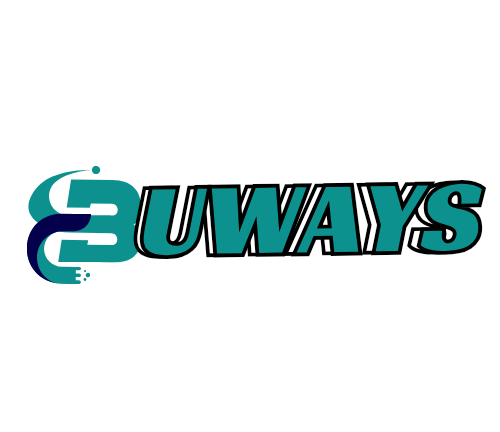In a world where instant gratification often trumps careful budgeting, Buy Now, Pay Later (BNPL) options are reshaping how we think about spending. These split payment services promise a more accessible shopping experience, allowing consumers to snag their dream purchases without the immediate financial burden. But as tempting as it may seem to divide those costs into bite-sized chunks, the question lingers: is BNPL truly worth it?
While convenience is a major draw, it’s essential to consider the potential pitfalls of accruing debt or facing unexpected fees. This article delves into the intricacies of BNPL, weighing the pros and cons to uncover the truth behind split payments. Whether you’re a seasoned user or contemplating your first purchase, understanding the fine print can make all the difference in ensuring your financial health remains intact. Join us as we explore the real impact of BNPL on your wallet and well-being.
Understanding Buy Now, Pay Later (BNPL)
In the modern digital age, Buy Now, Pay Later (BNPL) services have emerged as a popular financial tool, transforming the way consumers make purchases. Essentially, BNPL allows shoppers to buy products immediately and pay for them over a set period through interest-free installments. These services are especially appealing to younger generations who prefer flexible payment options and are less inclined toward traditional credit cards. BNPL provides an immediate solution to cash flow problems, enabling consumers to acquire goods they might not otherwise afford upfront.
The concept behind BNPL is not entirely new; it mirrors installment plans that have been around for decades. However, the integration of BNPL into online and in-store shopping experiences has made it more accessible and user-friendly. With just a few clicks, consumers can opt for split payments at checkout, often without the need for extensive credit checks. This ease of access has fueled the rapid growth of BNPL, making it a ubiquitous presence in the retail landscape.
Despite its growing popularity, BNPL is not without controversy. Critics argue that it encourages impulsive spending and can lead to financial instability for those who fail to manage their payments responsibly. Understanding the mechanics of BNPL and its implications is crucial for consumers to make informed decisions. As we explore the advantages and potential downsides of BNPL, it becomes evident that this payment method requires careful consideration and responsible usage.
How BNPL Works: A Step-by-Step Guide
The BNPL process begins at the point of sale, whether online or in-store. When a consumer decides to make a purchase, they select the BNPL option at checkout. This option is often prominently displayed alongside traditional payment methods, enticing shoppers with the promise of spreading out their payments. The consumer typically needs to create an account with the BNPL provider, providing basic personal information and, in some cases, undergoing a soft credit check.
Once the consumer is approved, the purchase amount is divided into several equal installments. The terms of these installments vary by provider but generally range from three to twelve months. The first payment is usually due at the time of purchase, with subsequent payments automatically charged to the consumer’s debit or credit card on a predetermined schedule. This automatic payment feature ensures convenience but also necessitates that consumers have sufficient funds available to avoid penalties.
BNPL providers make their money through merchant fees and, in some cases, late payment charges. Merchants benefit from BNPL by potentially increasing their sales and average order values, as consumers are more likely to make larger purchases when they can pay over time. For consumers, the appeal lies in the ability to enjoy their purchases immediately without the financial strain of paying the full amount upfront. However, it’s essential to read the fine print and be aware of any hidden fees or interest charges that may apply.
Advantages of Using BNPL for Consumers
One of the primary advantages of BNPL is the flexibility it offers consumers. By spreading payments over several months, shoppers can manage their cash flow more effectively and avoid large, immediate expenses. This flexibility is particularly beneficial for big-ticket items such as electronics, furniture, or travel, where paying the full amount upfront might be challenging. BNPL allows consumers to enjoy these products or experiences without the financial burden of a lump-sum payment.
Another significant benefit of BNPL is the potential for interest-free financing. Unlike traditional credit cards, which often come with high-interest rates, many BNPL providers offer zero-interest plans as long as payments are made on time. This can result in substantial savings for consumers who might otherwise incur interest charges on credit card purchases. Additionally, the straightforward installment structure makes it easier to budget and plan for future expenses.
BNPL also appeals to consumers with limited access to traditional credit. Young adults, students, and individuals with thin credit files may find it difficult to obtain credit cards or loans. BNPL provides an alternative financing option that doesn’t require a strong credit history. This inclusivity makes it an attractive option for a diverse range of shoppers, enabling them to participate in the consumer economy without the barriers associated with conventional credit products.
Potential Drawbacks and Risks of BNPL
Despite its advantages, BNPL comes with several potential drawbacks that consumers need to be aware of. One of the primary risks is the temptation to overspend. The ease and convenience of BNPL can lead to impulsive purchases that consumers might not otherwise make if they had to pay the full amount upfront. This can result in accumulating multiple BNPL plans simultaneously, leading to a significant financial burden when all payments come due.
Another concern is the possibility of incurring late fees and penalties. While many BNPL plans are interest-free, they often come with strict payment schedules. Missing a payment can result in hefty late fees, which can quickly add up and negate the benefits of interest-free financing. Additionally, some BNPL providers report late payments to credit bureaus, potentially damaging the consumer’s credit score and affecting their ability to obtain future credit.
BNPL can also create a false sense of financial security. Consumers may perceive the smaller installment amounts as more manageable, leading them to underestimate their overall debt. This can be particularly problematic for individuals who already have existing financial obligations. Without careful budgeting and financial planning, BNPL can contribute to a cycle of debt that becomes difficult to escape. It’s crucial for consumers to assess their financial situation and ensure they can meet all their payment commitments before opting for BNPL.
Comparing BNPL with Traditional Financing Options
When evaluating BNPL against traditional financing options such as credit cards and personal loans, several key differences emerge. Credit cards offer revolving credit, allowing consumers to borrow up to a predetermined limit and pay off the balance over time. While credit cards provide flexibility and the potential to earn rewards, they also come with high-interest rates if balances are not paid in full each month. BNPL, on the other hand, typically offers fixed installment plans with no interest, making it a more predictable and potentially cheaper option for those who can adhere to the payment schedule.
Personal loans are another traditional financing option, offering lump-sum amounts that can be used for various purposes, including large purchases. These loans often come with fixed interest rates and repayment terms, providing clarity on the total cost of borrowing. However, obtaining a personal loan usually requires a credit check and may involve fees, making it less accessible for some consumers compared to BNPL. Additionally, the application process for personal loans is often more cumbersome and time-consuming.
While BNPL offers several advantages over traditional financing, it’s not a one-size-fits-all solution. Each financing option has its unique benefits and drawbacks, depending on the consumer’s financial situation and preferences. For instance, consumers who value flexibility and rewards might prefer credit cards, while those seeking predictable, interest-free payments may find BNPL more appealing. Ultimately, it’s essential to weigh the pros and cons of each option and choose the one that aligns best with individual financial goals and circumstances.
The Impact of BNPL on Consumer Spending Habits
The rise of BNPL has significant implications for consumer spending habits. One of the most notable effects is the increase in discretionary spending. By breaking down the cost of purchases into smaller, manageable installments, BNPL makes it easier for consumers to justify spending on non-essential items. This can lead to a boost in retail sales, particularly for luxury and high-ticket items that might be out of reach for many shoppers without the option of split payments.
However, the ease of access to BNPL can also contribute to impulsive buying behavior. Consumers may feel less financial pressure when faced with smaller installment amounts, leading to a higher likelihood of making unplanned purchases. This can result in a cycle of acquiring unnecessary items and accumulating debt, which can strain personal finances over time. It’s crucial for consumers to exercise self-control and consider the long-term impact of their spending decisions when using BNPL.
On the flip side, BNPL can also promote responsible spending for those who use it wisely. By providing a clear repayment schedule, BNPL encourages consumers to plan their finances and budget for future payments. This can instill a sense of discipline and financial responsibility, helping consumers manage their money more effectively. Additionally, the ability to spread out payments can alleviate financial stress, allowing consumers to make purchases without depleting their savings or resorting to high-interest credit.
BNPL Providers: Who Are the Major Players?
The BNPL market is dominated by several key players, each offering unique features and services. Among the most prominent BNPL providers are Afterpay, Klarna, Affirm, and Sezzle. These companies have established themselves as leaders in the industry, partnering with numerous retailers to offer flexible payment options to consumers.
Afterpay, an Australian-based company, is one of the pioneers of BNPL and has expanded its presence globally. Afterpay allows consumers to split their purchases into four interest-free installments, paid every two weeks. The company has gained a loyal following, particularly among younger consumers, due to its user-friendly platform and transparency in terms.
Klarna, a Swedish fintech company, offers a variety of payment options, including BNPL. Klarna’s BNPL service allows consumers to pay for their purchases in four equal installments or within 30 days of the purchase date. Klarna’s flexibility and extensive merchant network have made it a popular choice among consumers seeking convenient payment solutions.
Affirm, based in the United States, provides BNPL services with a focus on transparency and no hidden fees. Affirm allows consumers to choose their repayment terms, ranging from three to twelve months, with the option to pay in full upfront. Affirm’s commitment to clear terms and no late fees has garnered positive feedback from consumers who value straightforward financing options.
Sezzle, another major player in the BNPL space, offers interest-free installment plans with a unique focus on promoting financial education. Sezzle provides resources and tools to help consumers manage their finances and make informed spending decisions. This emphasis on financial wellness sets Sezzle apart from other BNPL providers and appeals to consumers looking for a responsible approach to split payments.
Legal and Regulatory Considerations for BNPL
As BNPL continues to grow in popularity, it has attracted the attention of regulators and policymakers. The regulatory landscape for BNPL varies by country, with some regions taking a more stringent approach to oversight. In the United States, for example, the Consumer Financial Protection Bureau (CFPB) has expressed concerns about the potential risks associated with BNPL and is considering measures to ensure consumer protection.
One of the primary regulatory concerns is the lack of transparency in BNPL agreements. While many providers tout interest-free plans, the fine print often includes late fees, penalties, and other charges that can catch consumers off guard. Regulators are pushing for clearer disclosure of terms and conditions to ensure that consumers fully understand the costs and obligations associated with BNPL.
Another regulatory focus is the potential impact of BNPL on consumer credit. Some BNPL providers do not report on-time payments to credit bureaus, which means that consumers do not benefit from positive credit history building. However, late payments may be reported, negatively affecting credit scores. Regulators are advocating for more consistent and fair reporting practices to protect consumers’ creditworthiness.
In addition to these concerns, there is a growing call for standardized regulations across the BNPL industry. This would create a level playing field for providers and ensure that consumers are protected regardless of which BNPL service they use. As the BNPL market continues to evolve, regulatory frameworks will play a crucial role in shaping the future of split payments and safeguarding consumer interests.
Tips for Using BNPL Responsibly
While BNPL can offer significant benefits, it’s essential for consumers to use it responsibly to avoid potential pitfalls. One of the most important tips is to only use BNPL for purchases that are within your budget. Before opting for BNPL, assess your financial situation and ensure that you can comfortably make the installment payments without compromising other financial obligations.
Another key tip is to read the terms and conditions carefully. Understand the payment schedule, any potential fees or penalties, and the consequences of missing a payment. Being aware of the fine print can help you avoid unexpected charges and ensure that you are fully informed about your BNPL agreement.
It’s also advisable to limit the number of BNPL plans you have at any given time. Managing multiple installment plans can become overwhelming and increase the risk of missing payments. Keeping track of payment due dates and maintaining a clear budget can help you stay organized and avoid financial strain.
Additionally, consider using BNPL as a tool for planned purchases rather than impulsive buys. By planning your purchases and using BNPL strategically, you can take advantage of its benefits without falling into the trap of unnecessary spending. Lastly, if you find yourself struggling to keep up with payments, seek help from a financial advisor or credit counseling service to manage your debt effectively.
Conclusion: Is BNPL Right for You?
Buy Now, Pay Later (BNPL) has revolutionized the way consumers approach spending, offering a convenient and flexible alternative to traditional financing options. Its appeal lies in the ability to make purchases without the immediate financial burden, making it accessible to a wide range of consumers. However, as with any financial tool, BNPL comes with its own set of risks and challenges.
For those who use BNPL responsibly, it can be an excellent way to manage cash flow and make large purchases more affordable. The key is to approach BNPL with caution, understanding the terms and conditions, and ensuring that you can meet your payment obligations. By doing so, you can enjoy the benefits of split payments without compromising your financial health.
Ultimately, whether BNPL is right for you depends on your individual financial situation, spending habits, and ability to manage debt. By weighing the pros and cons and considering your long-term financial goals, you can make an informed decision about whether BNPL is a worthwhile option for your needs. As with any financial decision, careful consideration and responsible usage are essential to maintaining your financial well-being.





